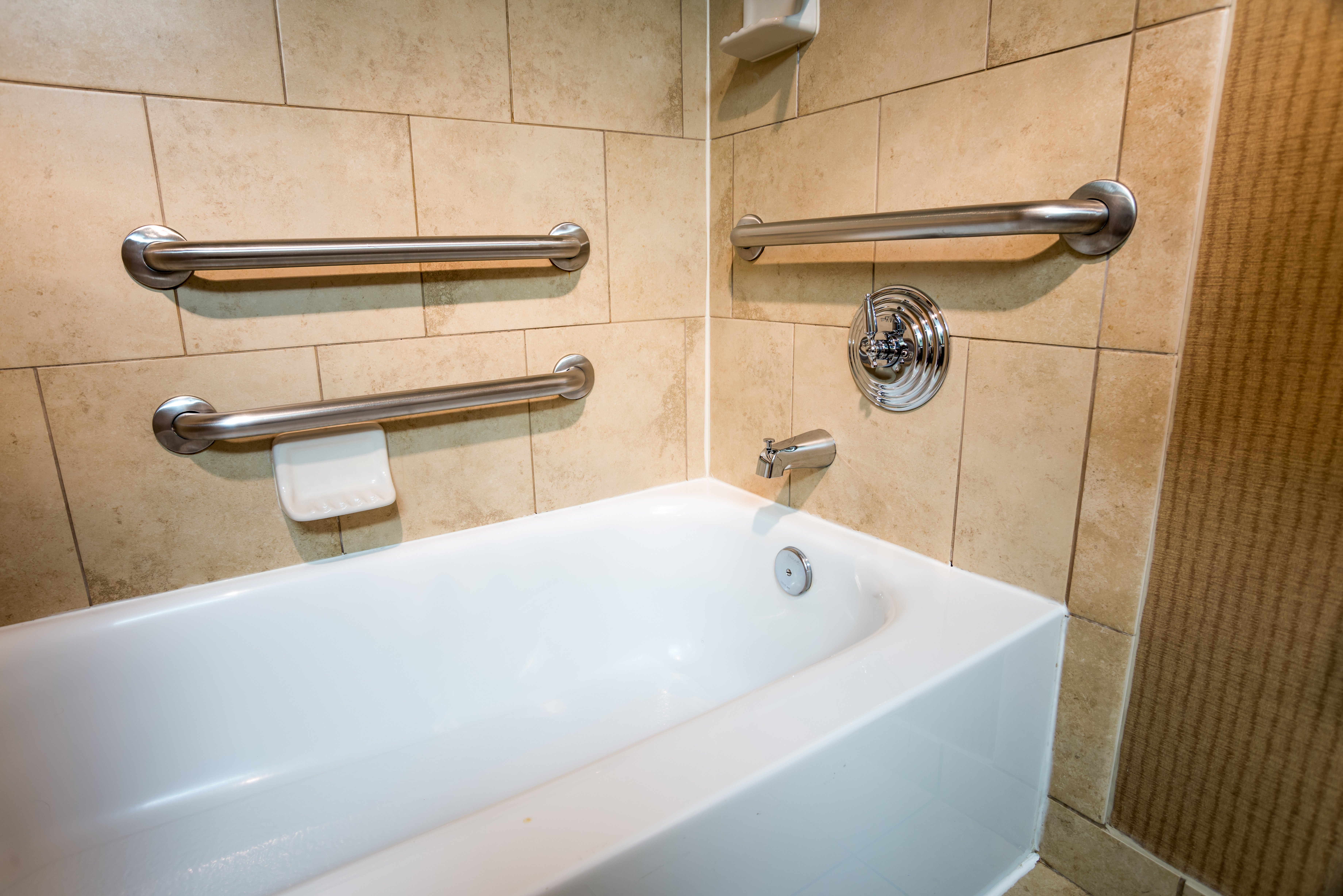The ADA, otherwise known as the Americans with Disabilities Act, isn't just a set of guidelines. Its purpose is to make the lives of those with disabilities easier.
When beginning your next ADA compliant bathroom project, several features are required per the standards. We've outlined below the four main steps you need to consider to make sure your project is up to compliance:
1. Tubs and Shower Stalls
Tubs and Shower Stalls must have grab bars located along the back wall and control wall. The grab bars should be installed in a horizontal position, 33 inches minimum and 36 inches maximum above the finish floor. It is also important to ensure that the grab bars should be free of sharp or abrasive elements and should have rounded edges. Lastly, grab bars should not rotate within their fittings and the allowable stresses for forces applied to the grab bar shall not exceed 250 pounds.
2. Roll in Showers
Roll in showers must also have a shower seat installed on the side wall opposite of the control wall. For a standard roll-in shower compartment, a folding type seat is required and should be installed on the side wall adjacent to the controls. For a rectangular seat, the rear edge should be 2.5 inches max and the front edge 15-16 inches. The side edge of the seat should be 1.5 inches max from the adjacent wall.
In regards to L-Shaped seats, the rear edge shall be 2.5 inches max and the front edge 15-16 inches. The rear edge of the "L" portion of the seat shall be 1.5 inches max from the wall and the front edge shall be 14-15 inches. Furthermore, the end of the "L" shall be 22-23 inches from the main seat wall. Finally, allowable stresses shall not exceed 250 pounds applied at any point on the seat, fastener, mounting device, or supporting structure.
3. Toilet height
Toilet height must fall within 15 inches to 19 inches above the finished floor and have grab bars on at least one side wall and the rear wall. Urinals on the other hand shall be either the stall-type or the wall-hung type with the rim 17 inches max above the ground. Urinals shall also be a minimum of 13.5 inches deep.
4. Sinks
Sinks must be installed with a minimum height of 34 inches above the finished floor and should provide toe and knee clearance. Any exposed pipes should be insulated or covered with protective padding. The soap and towel dispensers should also be conveniently usable by a person at the accessible lavatory. In regards to faucets, hand-operated metering faucets shall remain open for a minimum of 10 seconds. Lastly, there shall be no sharp or abrasive surfaces under lavatories and sinks.
More specific details can be found in Chapter 6 of the 2010 ADA Standards for Accessible Design. Also be sure to get in touch with us via social media and sign up for our newsletter to stay up to date on more helpful content relating to ADA compliant bathware.





.png)





